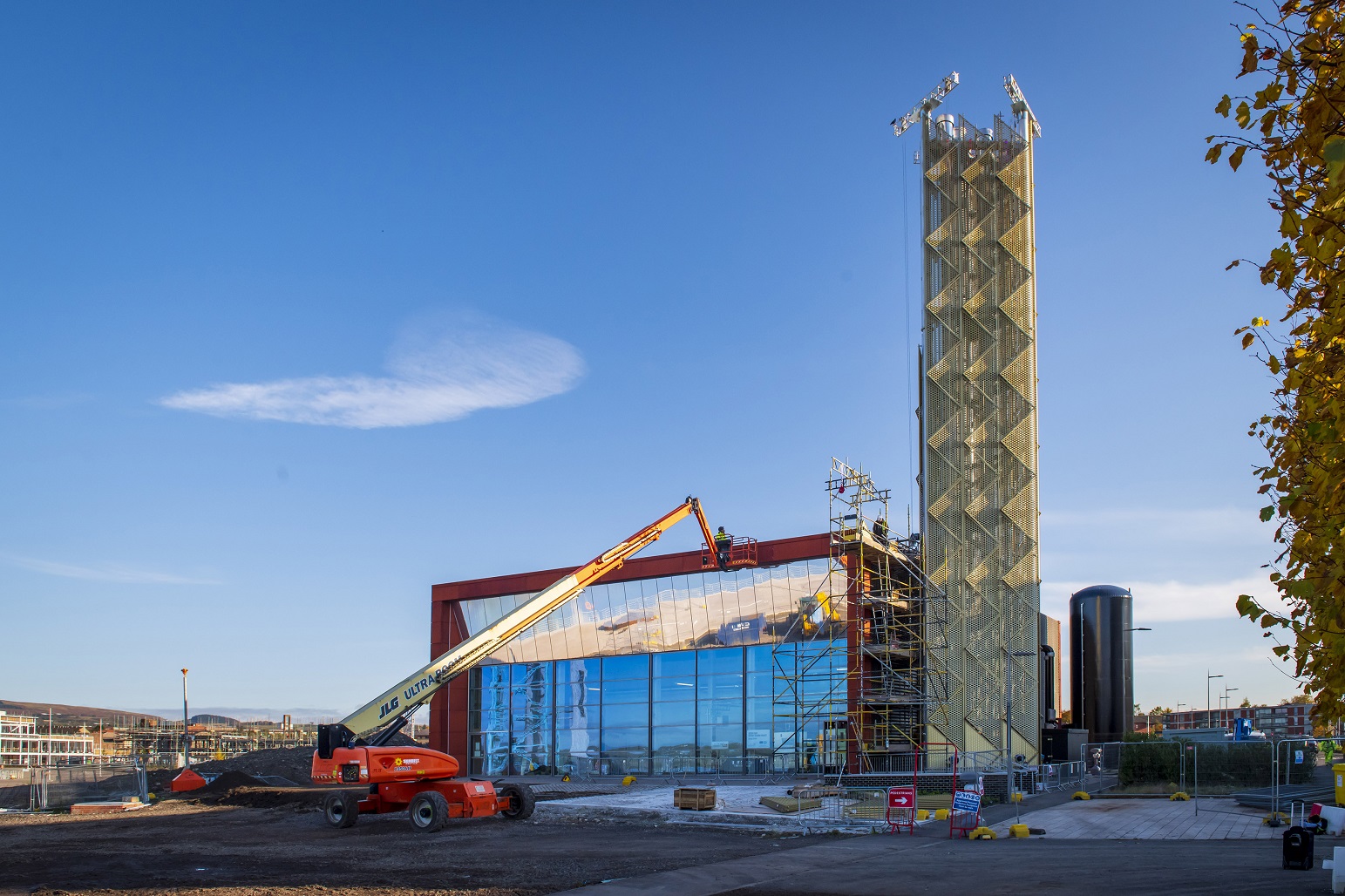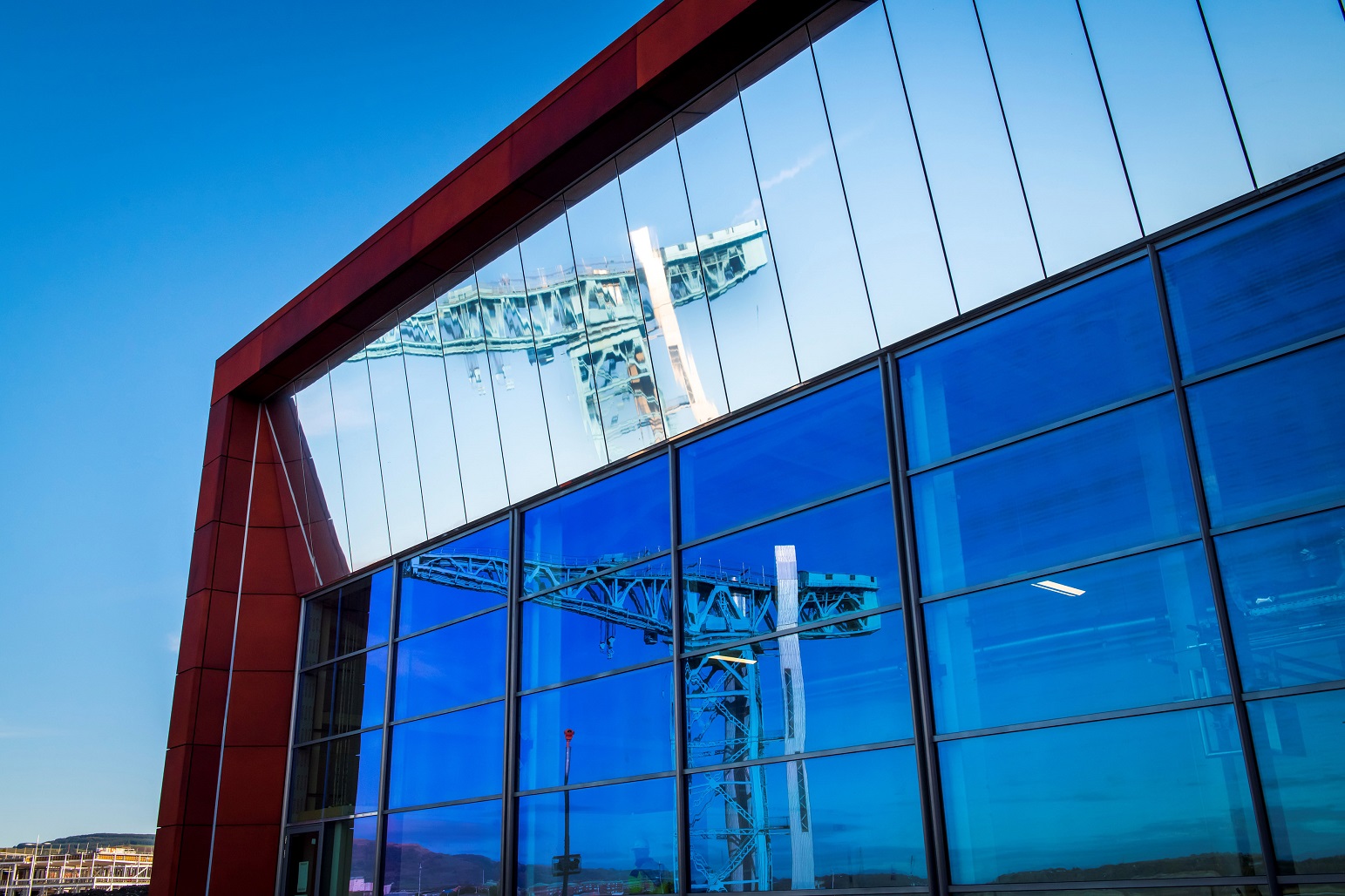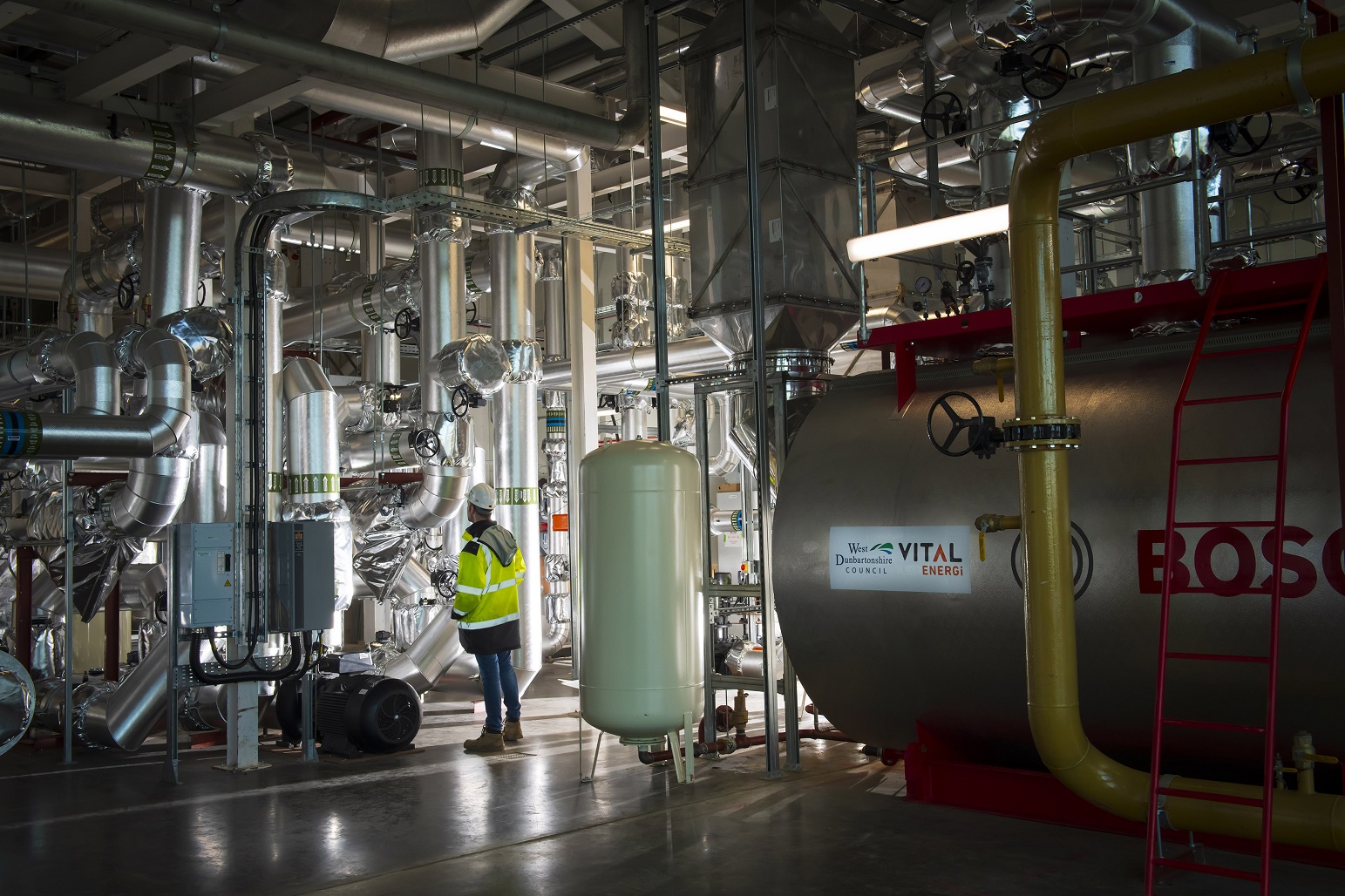Pioneering Clydebank district heating network now operational
A high-tech new heating system which will transform the way homes, businesses and public buildings in Clydebank are heated is now operational.

The District Heating Network is the first large-scale water source heat pump scheme of its kind in Scotland, and will make Dalmuir one of the greenest areas in the country.
The system works by extracting water from the Clyde to generate heat for buildings on the site of the former John Brown Shipyard, now known as Queens Quay.
The £20 million project to create a state of the art Energy Centre and lay 5km of below-ground pipework was completed last week on behalf of West Dunbartonshire Council.
In the initial phase of switch on, heat is being supplied to West Dunbartonshire Council offices at Aurora House, the Titan Enterprise Centre, Clydebank Leisure Centre and the new care home at the site, Queens Quay House.
Pipe work is also in place to supply the forthcoming Clydebank Health Centre, over 140 flats and retail units currently on site, all other homes planned for the site as well as Clydebank Library and Clydebank Town Hall.
The carbon-free system has been designed on a modular basis to enable future expansion beyond Queens Quay, with scope to heat the Golden Jubilee Hospital, Clyde Shopping Centre and into the town centre.
The introduction of the network will make a major contribution towards the council’s climate change targets, as well as allowing residents of more than 1000 homes due to be built on the site to enjoy lower bills with a system that requires far less upkeep than a gas boiler.

Council-run energy company West Dunbartonshire Energy LLP has been established to operate and manage the system and take on the day to day running of the network.
Councillor Iain McLaren, convener of infrastructure, regeneration and economic development, said: “This system is the first of its kind in Scotland and I am proud that West Dunbartonshire is leading the way in using this natural resource to provide energy.
“This district heating system will have a hugely positive impact on Clydebank and West Dunbartonshire as a whole, allowing the council to take steps to address fuel poverty among tenants and residents by offering reduced tariffs compared to traditional heating methods, as well as working to achieve carbon reduction targets, removing more than 4,000 tonnes of carbon from the environment every year for the next 40 years.
“I’d like to pass on a big congratulations to all involved in bringing this project to completion. It has involved years of hard work, but it has been truly worth it because our communities will reap the rewards for decades to come.”
Councillor Marie McNair, vice convener of infrastructure, regeneration and economic development, added: “I am pleased to see this pioneering project reach completion, as it will be extremely beneficial to the people of Clydebank for many generations to come.
“We have a long and proud history of industry at the River Clyde on this site, and I welcome the new system which will mean the River and its water can again be used to support its residents. The design of the Energy Centre has also been chosen to complement our town’s landmark features, including mirrored cladding to reflect the River and Titan Crane.
“The design of the system means that as well as heating homes and buildings on the Queens Quay site, it can be extended out to other sites and into our town centre, so it represents a significant investment in Clydebank, and the wider area.”

The council will meet £14.458m of the cost of the system, with the Scottish Government funding £6.1m through the European Regional Development Fund.
The Energy Centre, which has a distinctive 30m chimney, will house the building control and management system to operate and monitor operations, all controlled remotely, as well as gas boilers, pressurisation units and distribution pumps.
The primary heat source is two 2.65MW Water Source Heat Pumps (WSHPs) that convert heat held within the water of the River Clyde into hot water at a temperature of 75 degrees, and two 7MW gas boilers which provide top up heat at peak times when the pumps are operating, as well as providing resilience when no heat is available from the pumps.
The Energy Centre building was designed by Cooper Cromar Architects and built by Muir Construction with the heat producing plant designed and installed by Vital Energi.
It is part of the wider £250m regeneration of the historic site, and when complete, the once-derelict area will be transformed into a vibrant waterside community featuring a diverse range of properties including approximately 1,000 homes, 500,000 sq ft of commercial space, a state-of-the-art £19m health centre, and a £10m care home.
West Dunbartonshire Council is regenerating the land in partnership with site owners Clydeside Regeneration Ltd (CRL) and development partner Dawn Urban Regeneration Ltd.





















